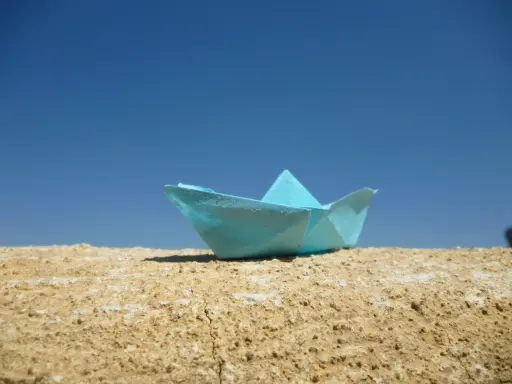How to choose the best and most eco-friendly swimwear
By published
Elevate Your Summer Swim Game: From Timeless Vintage to Eco-Friendly Materials
As summer approaches, the allure of iconic figures like Jane Birkin in her fashionable ring-front bikini or Brigitte Bardot sporting her signature ruffled bottoms resurfaces. Swimwear brands frequently draw inspiration from these legendary personas, revamping classic designs for modern sensibilities. Take, for instance, the famed dress worn by Julia Roberts in "Pretty Woman"; Hunza G, commemorating its 40-year milestone this year, crafted it using its distinctive crinkle material.
However, alongside the enduring presence of these beloved styles lies a significant environmental impact. The issue largely revolves around plastic use. To achieve properties like stretchability, shape retention, and quick-drying capabilities, materials such as nylon, polyester, and elastane—often sourced from fossil fuels—are prevalent due to their cost-effectiveness and performance benefits. Unfortunately, the laundering of synthetic textiles results in over half a million tonnes of microplastics entering our oceans annually. Furthermore, low-quality swimwear is short-lived, perpetuated by the fast-fashion model, which promotes repeated purchases with each holiday. Recycling swimwear remains a challenge, contributing to the staggering statistic that out of the 100 billion garments produced globally, 65% are disposed of within a year.
Historically, the scenario was different. Prior to the 1930s, bathing suits in the U.S. and Europe primarily utilized natural materials, particularly wool. Kevin L. Jones, senior curator at ASU FIDM Museum in Los Angeles, notes, "In the past, materials were cherished and used until entirely worn out, with few able to frequently update their wardrobes." During this era, many crafted their own swimwear.
The shift occurred as manufacturers struggled with the drawbacks of wet wool, leading to innovations like Lastex—an elastic yarn developed by the United States Rubber Company. Jones explains, "Unlike natural fibers like wool, silk, or hemp, proprietary technologies could be patented, catalyzing advancements in the chemical industry that have influenced clothing ever since, resulting in the pervasive use of polyester and elastane along with a disposability mentality."
However, a gradual shift is underway, with brands exploring improved methods and sustainable materials. One such material is Econyl, created from synthetic waste, including abandoned fishing nets, and transformed into new nylon fiber.
Labels like Stay Wild are embracing this approach, producing collections from Econyl in a small London factory. Co-founder Natalie Glaze shares, "Our model emphasizes slow fashion, diverging from the conventional season-based cycles. Our initial two years featured just one collection. We adopted pre-orders to reduce waste, utilize excess stock, and craft high-quality pieces that are enduring, promoting the ethos of buying less but better."
While Econyl represents progress, challenges remain—specifically, the shedding of microfibers during washes. Caring for swimwear can mitigate this issue; gentle handwashing can significantly minimize microfiber release. Since swimwear is frequently worn for short durations, it requires less frequent machine laundering. When machines are necessary, utilizing wash bags or filters can aid in retention.
The second-hand market for swimwear is gaining traction. Clare Richardson, founder of pre-loved e-commerce site Reluxe Fashion, observes, "The growing acceptance of pre-loved clothing has included swimwear. In past years, second-hand shoes were shunned, but now they dominate our catalog. Buyers can decide the condition they're comfortable with—whether it's brand-new or pre-owned."
Richardson emphasizes the importance of purchasing from retailers that guarantee the authenticity of luxury pre-owned swimwear. At Reluxe, she mandates that items must be free of stains and damage, fully documented online.

Photographer Isabelle Hardy sources swimwear through platforms like Vinted, Depop, and Vestiaire Collective, but her finest find was a vintage one-piece from eBay. "Many years ago, I acquired a stunning piece reminiscent of Hunza G's aesthetic, though I couldn't afford the brand then. Resale platforms host numerous unworn items still bearing tags."
Concerns around hygiene often deter buyers from second-hand swimwear, so personal inspection becomes a valuable reassurance. Thrift stores attract sustainability advocate Jemma Finch, who found her latest swimwear there: "These venues often feature high-quality, lightly used items at significantly reduced prices. Additionally, many thrift shops clean and sanitize their inventory prior to resale, ensuring confidence in their cleanliness."
Holly Watkins, proprietor of One Scoop Store in northeast London, utilizes soda crystals to address stains on lighter swimsuits. "We ensure all swimwear is washed prior to resale," she states, noting that up to 70% of her inventory is new with tags. "Purchasing pre-owned offers access to brands one might usually overlook. Investing in quality swimwear truly pays off. We also stock plenty of deadstock vintage pieces with original labels."
Unfortunately, only a mere 1% of discarded clothing is recycled into new garments, primarily due to the prevalent use of mixed materials, with polyester leading the production statistics. This complexity complicates the recycling process, making it challenging to recover individual fibers without degrading others.
For those seeking timeless 1960s styles, exploring vintage websites and shops is recommended. Luxury resale platforms often carry unworn swimsuits that retain their labels. When shopping for new items, investigating a brand's commitment to eco-friendliness is essential.
Stay Wild encourages sustainable practices by accepting worn swimwear from any brand destined for landfill, repurposing them into industrial items like carpets. The brand pursues a circular model, aiming to ultimately recycle old swimwear back into new designs. Glaze elaborates, "After extensive development, we've produced a fully circular swimsuit composed of 80% or more of a single material, thus eliminating the need for elastane."
While challenges concerning elastane persist, Anne Prahl, founder of Circular Concept Lab, believes the future of eco-conscious swimwear hinges on the viability of textiles-to-textiles recycling. She cites Decathlon's strides in this area, having introduced a swimsuit made from recyclable fabric.
The collaborative efforts of Lycra’s T400 fiber with textile recyclers show promising potential for overcoming recycling hurdles associated with mixed materials, paving the way for a more sustainable future.
In the realm of fashion, sports have historically been at the forefront of innovation, a trend that persists today. "Athletes rigorously test material endurance globally," notes Jones. The potential influence of Artificial Intelligence on this domain could yield remarkable innovations but poses certain risks as well, the implications of which remain uncertain. Through a historical lens, he emphasizes, "There is a cyclical nature to fashion."
Ultimately, the range of options for more sustainable swimwear continues to expand. Through thoughtful consumer choices, it is hoped that today's decisions will contribute to shaping a more environmentally responsible future, significantly impacting how history ultimately reflects on this era.





